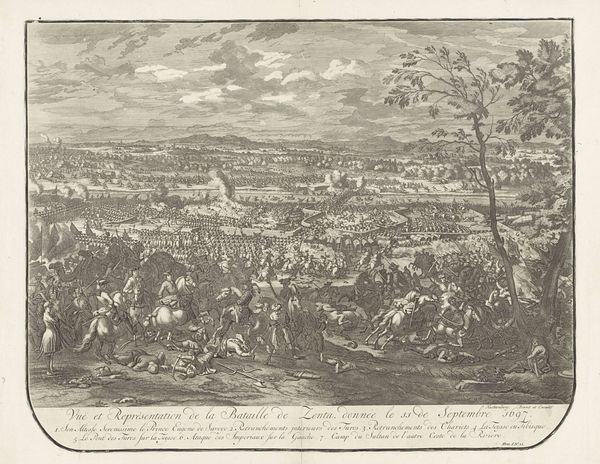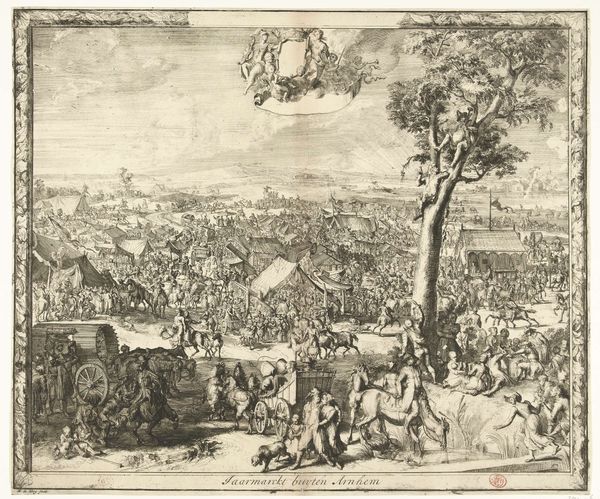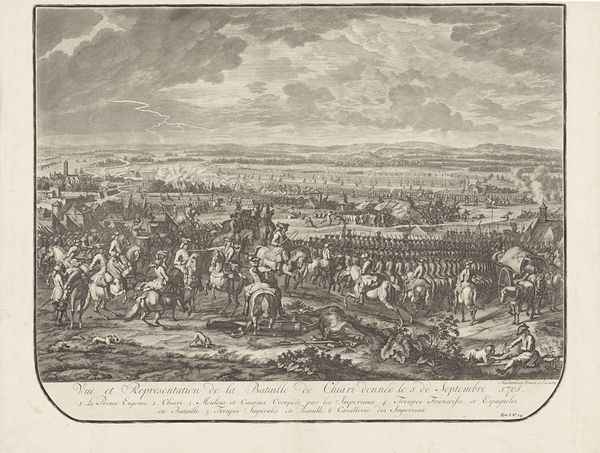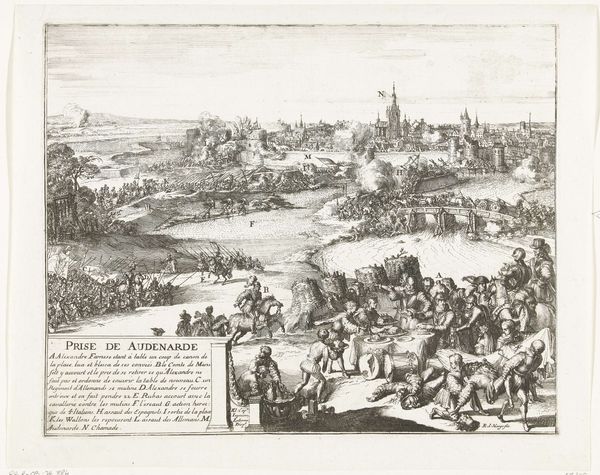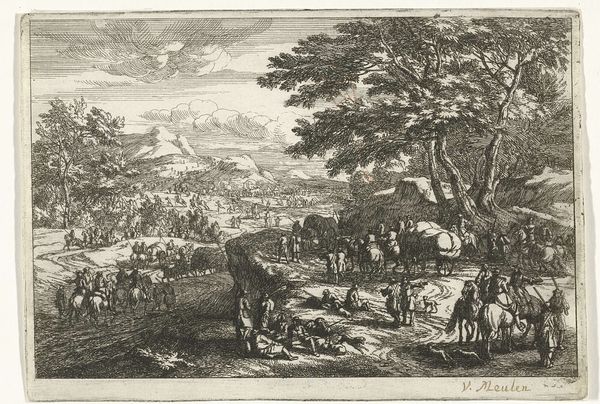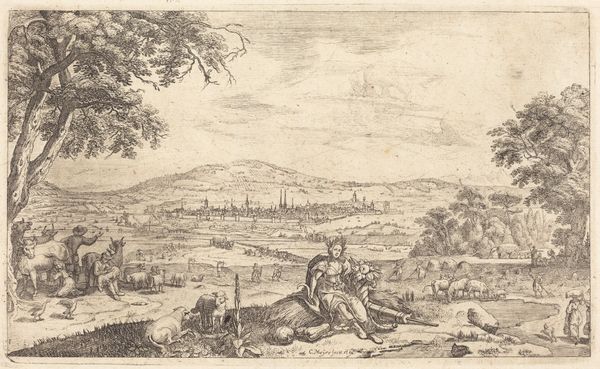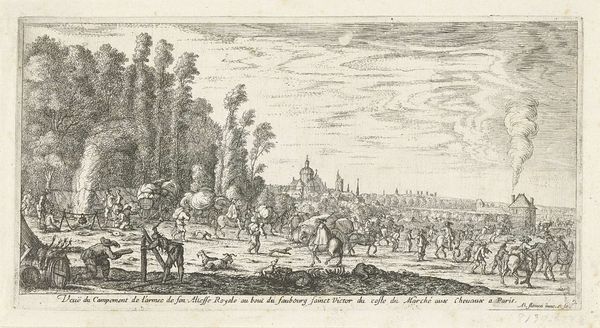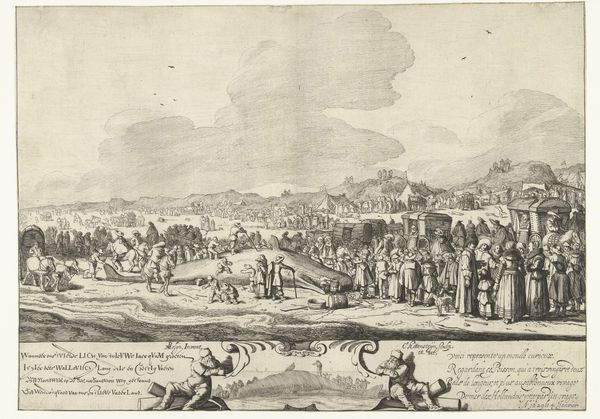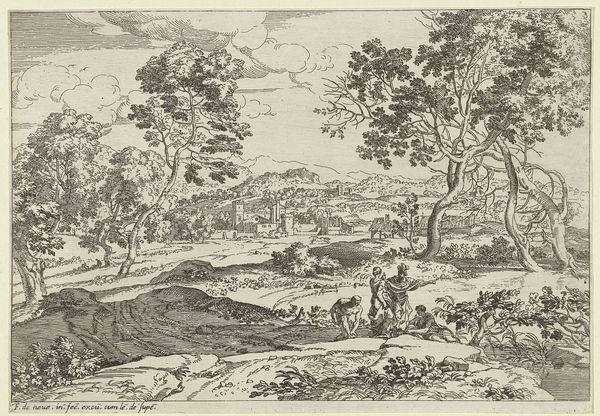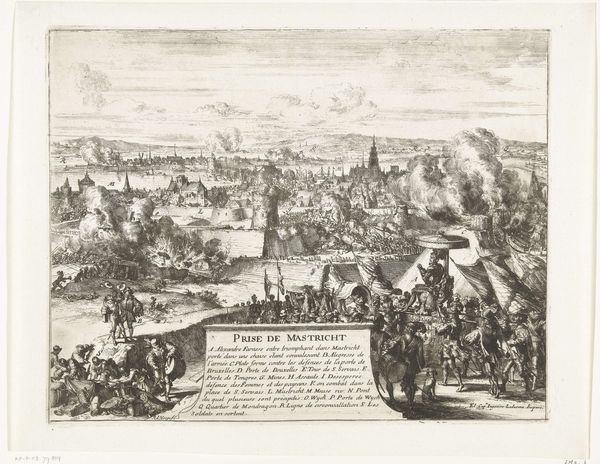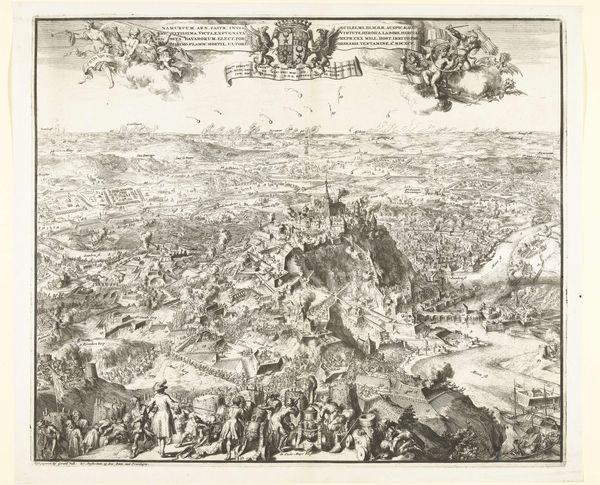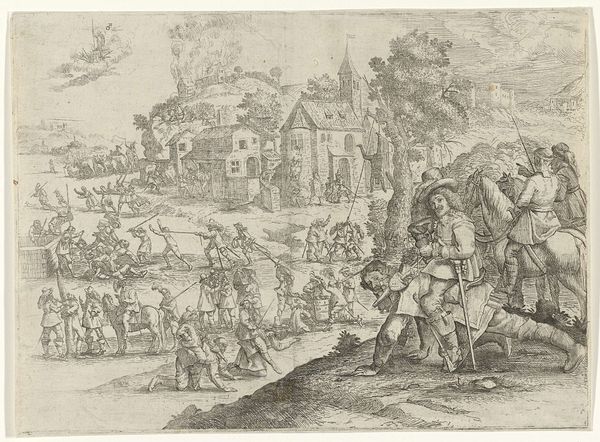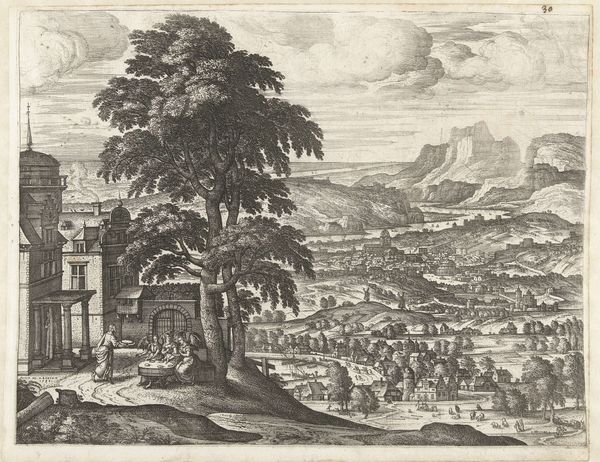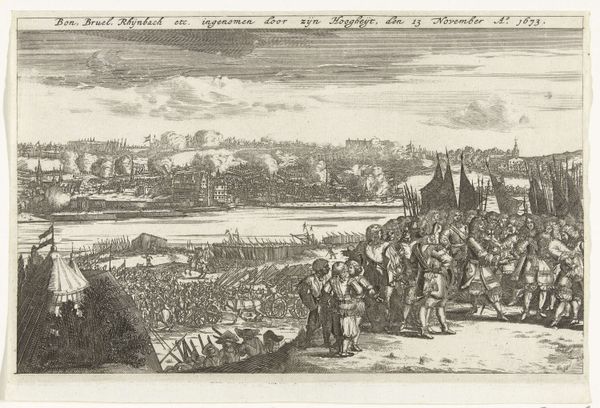
print, engraving
#
narrative-art
#
baroque
#
pen drawing
# print
#
old engraving style
#
landscape
#
figuration
#
engraving
Dimensions: height 151 mm, width 261 mm
Copyright: Rijks Museum: Open Domain
Curator: Here we have an engraving called "Wonderbare spijziging", which translates to "Miraculous Feeding" or "Miraculous Nourishment". It's an anonymous piece, dating approximately from 1686 to 1813. The medium is listed as a print, pen drawing, and engraving. Editor: What strikes me immediately is the bustling scene it portrays; it almost feels chaotic, yet there is a certain organized rhythm in how the figures are positioned within the expansive landscape. Curator: It does reflect Baroque sensibilities, doesn't it? The dynamism is quite pronounced, as is the attempt to convey a complex narrative. We must consider the historical role of such images: engravings like these disseminated biblical stories across a wide audience, especially among those who may not have been literate. They shaped public understanding and reinforced religious narratives. Editor: Absolutely. And if we delve deeper into the imagery, we find this distinct arrangement of characters and symbolism central to the story of the Feeding of the 5000 from the Gospels, where Christ miraculously multiplies loaves and fishes. Curator: Precisely. Notice how the artist contrasts the figure of Christ – he's often set apart and rendered in a position of control within what appears, initially, to be just a giant multitude of anonymous figures. Editor: And despite the fine detail afforded to the individuals within that multitude, their repetition really lends that almost overwhelming emotional element, reminding one that food equals survival for these people. The mountain dominating the upper right lends to the dramatic landscape, and it is like the viewers are placed amidst this historic moment. The cultural memory embedded in the Gospel account makes it still relatable even now. Curator: It is powerful how an image from so long ago continues to transmit social and religious values, don’t you think? Looking at this landscape, it could easily act as an allegory, or commentary, to times of famine or crisis that affected everyday life. These depictions often become touchstones. Editor: Indeed. In scrutinizing this piece and its iconography, its sustained and broad cultural relevance become quite apparent. Curator: A lot to think about, and a great example of how art interacts with belief and power structures. Editor: Agreed; so much conveyed through simple lines!
Comments
No comments
Be the first to comment and join the conversation on the ultimate creative platform.
